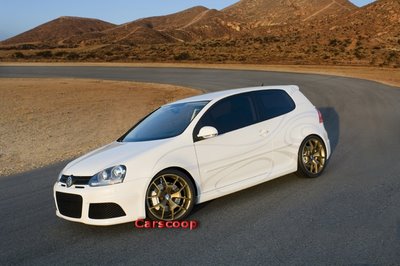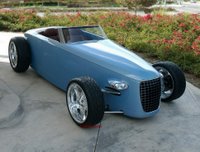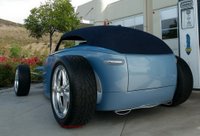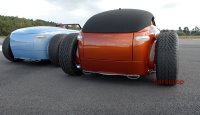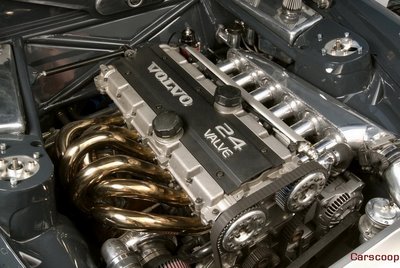 Wicked bad... That's the best description I can give to VW's new interpretation of the R Concept that was developed by Volkswagen Chief Designer Derek Jenkins and his crew at the firm's
Wicked bad... That's the best description I can give to VW's new interpretation of the R Concept that was developed by Volkswagen Chief Designer Derek Jenkins and his crew at the firm's 


Specs: The GTI R is equipped with a heavily revised 2.0 TFSI (among others the stock turbocharger was replaced with a larger Garrett ball-bearing unit). The result is a whopping 375Hp, on 93-octane pump gas. If 100-octane fuel is used, output rises to some 400Hp. Despite being rolled straight out of the design studio on to the track, according to VW, the R GTI pulled off an impressive 0 to 60-mph time of 4.8 sec.
Exterior: The stock GTI's front fenders, hood, side rockers, and hatch door where replaced with carbon-fiber panels developed by OSIR. Additional carbon-fiber components include the lower front spoiler, front grille surround, rear rooftop spoiler and restyled rearview mirrors. Other distinctive exterior design touches include blacked-out front headlamp housings, R32 tail lamps and central twin exhaust pipes. Running gear includes black 19" alloys in Michelin Pilot Sport Cup ultra-high-performance tires, sized 265/30.



Interior: The cabin is swathed in black leather complemented by red stitching. Just aft of the front bucket seats is a clever safety belt system that was developed in the design studio. It's comprised of a bar that anchors the front racing harnesses, which can swing up and out of the way to allow passengers easier access to the two rear seats. As part of the R GTI's weight-reduction program, the stock rear seats were removed and replaced by two racing buckets.

 Technorati: VW+R+GTI, VW+Golf+GTI, Volkswagen, 2007, bodykit, Specialty+Equipment+Market+Association, SEMA, SEMA+Show, 2006, tune, tuning+news, images, pictures, autos, auto+news, car+news, automobile, cars, automotive, vehicles, Carscoop
Technorati: VW+R+GTI, VW+Golf+GTI, Volkswagen, 2007, bodykit, Specialty+Equipment+Market+Association, SEMA, SEMA+Show, 2006, tune, tuning+news, images, pictures, autos, auto+news, car+news, automobile, cars, automotive, vehicles, Carscoop
